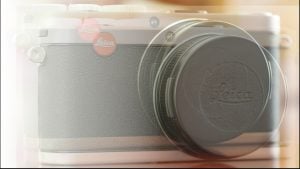

Seeing double-vision with the Leica X1.
Nestled deep inside the instruction manual for the Leica X1 digital compact camera is a short description of image stabilization that gave birth to one of the most incredible, outrageous digital camera hacks of all time. There are no spoilers here; the exact excerpt from the Leica manual is repeated in its entirety. See if you can figure out the sensational, revolutionary photo imagery technique that was discovered hidden in this mundane explanation of Leica X1 picture stabilization.
The hidden trick
Excerpted from Leica X1 Instructions manual (English translation), page 115, column 2, heading Image Stabilization, paragraphs 1 – 4:
“Especially in low light situations, the necessary shutter speed may be too slow to ensure sharp pictures, even with the activated AUTO ISO function (see p. 95). The LEICA X1 offers a function that will often produce sharp pictures even with such slow shutter speeds.
“In the menu, select Image Stabilization (3.8), and in the submenu the desired setting.
Notes:
“The camera takes two pictures automatically in series with this function, one with a faster and one with a slower shutter speed (you will hear the shutter operate twice during the operation). Then, it takes the data of the two exposures and combines them into one with digital image processing.
“Therefore, please hold the camera steady until the shutter has released the second time.”
–End of excerpt.
Did you see the awesome picture-taking opportunity that the diminutive X1 is unintentionally offering users? Yes, you guessed it; in-camera, digital double exposures are now possible (see Figures 1 and 2).
Figure 2. An in-camera double-exposed Leica X1 photograph.
Figure 1. A normal Leica X1 photograph.
No, you can forget about those other digital camera charades that claim to make double exposures by using multiple exposures (Please Note: by using this option, some cameras may be able to simulate the double exposure Leica X1 trick, but being able to “edit” these other digital copycats ad nauseam disqualifies them as a true double exposure), overlay exposures, and exposure bindings…those are all fake gimmickry trying to “act” like a true double exposure. Meanwhile, acting just like a film camera’s double exposure operation, the X1 takes two exposures on top of each other, as shown in Figure 3. It’s an incredibly creative opportunity to make a unique photograph that is blended with spontaneity, some whimsy, and a healthy dose of serendipity (see Figure 4).
Figure 3. Juxtapose varied subjects with a double exposure.
Figure 4. Combine textures with a double exposure.
Note: After making your first exposure with a film camera, double exposure is performed by pressing the rewind release button on the camera’s base plate (or the rewind lever on the camera’s face plate) while simultaneously cocking the film advance lever. Now, the second exposure is made, followed by the normal operation of the film advance lever. Alternatively, some film cameras, like the Mamiya 645, have a dedicated “multiple exposures” switch. Savvy veteran film photographers will make an additional blank exposure following each double exposure.
While this X1 double exposure technique is experimental, here are a couple of pointers to ensure that you get usable in-camera, digital double exposures:
1. Turn on image stabilization using the X1 menu.
2. You must turn on the shutter release sound for allowing you to hear both exposures. In the X1 menu, select “Shutter Volume” and set it to “High.”
3. Press the ISO button and select “100.”
4. Set the shutter speed dial to “A” for automatic exposure.
5. Manually set the aperture dial to a small diaphragm diameter. Depending on ambient lighting, f/8 should be a good starting point. Make a double exposure and adjust the aperture until you see the desired result.
6. This double exposure process requires some photographer finesse to achieve good results. Depending upon available lighting, the combined exposures will typically be 2 – 30 seconds long. This short exposure duration doesn’t give you much time to move between your two subjects for the double exposure, so plan ahead (see Figure 5).
Figure 5. Get a cubist with double exposure.
7. Once you click the shutter release button, you don’t have to keep holding it down. Remember to move the camera quickly to the second exposure and hold it steady for the remainder of the time. The X1 will display both the selected aperture and the combined total exposure time during each shot.
Subdued lighting conditions are imperative for the X1 image stabilization feature to produce usable double exposures. There may be times, however, when you might want to add some additional lighting to a double exposure. Manually firing a small handheld electronic flash, like the one in Figure 6, can add some visual emphasis to your creative expression (see Figure 7).
Figure 7. An electronic flash can highlight a detail within a double exposure.
Figure 6. A small handheld electronic flash can be fired during a double exposure.
Thank you Leica designers for imbuing the X1 with a double exposure Easter egg that raises its photographic powers far above those of any other digital compact camera (see Figure 8). Enabling a real, genuine digital double exposure capability is a true game changer in film-less photography (see Figure 9).
Figure 9. A pseudo “triple” exposures can be made with a double exposure.
Figure 8. Fantastical environments can be composed with a double exposure.
Discovering a hidden feature like the Leica X1 double exposure capability adds incredible user satisfaction to any camera (see Figure 10). Maybe you can find an undiscovered photography gem buried inside your camera. You can start your path to discovery by remembering to always Read The “Fun” Manual (RTFM).
Figure 10. A surreal image can be created with a double exposure.







